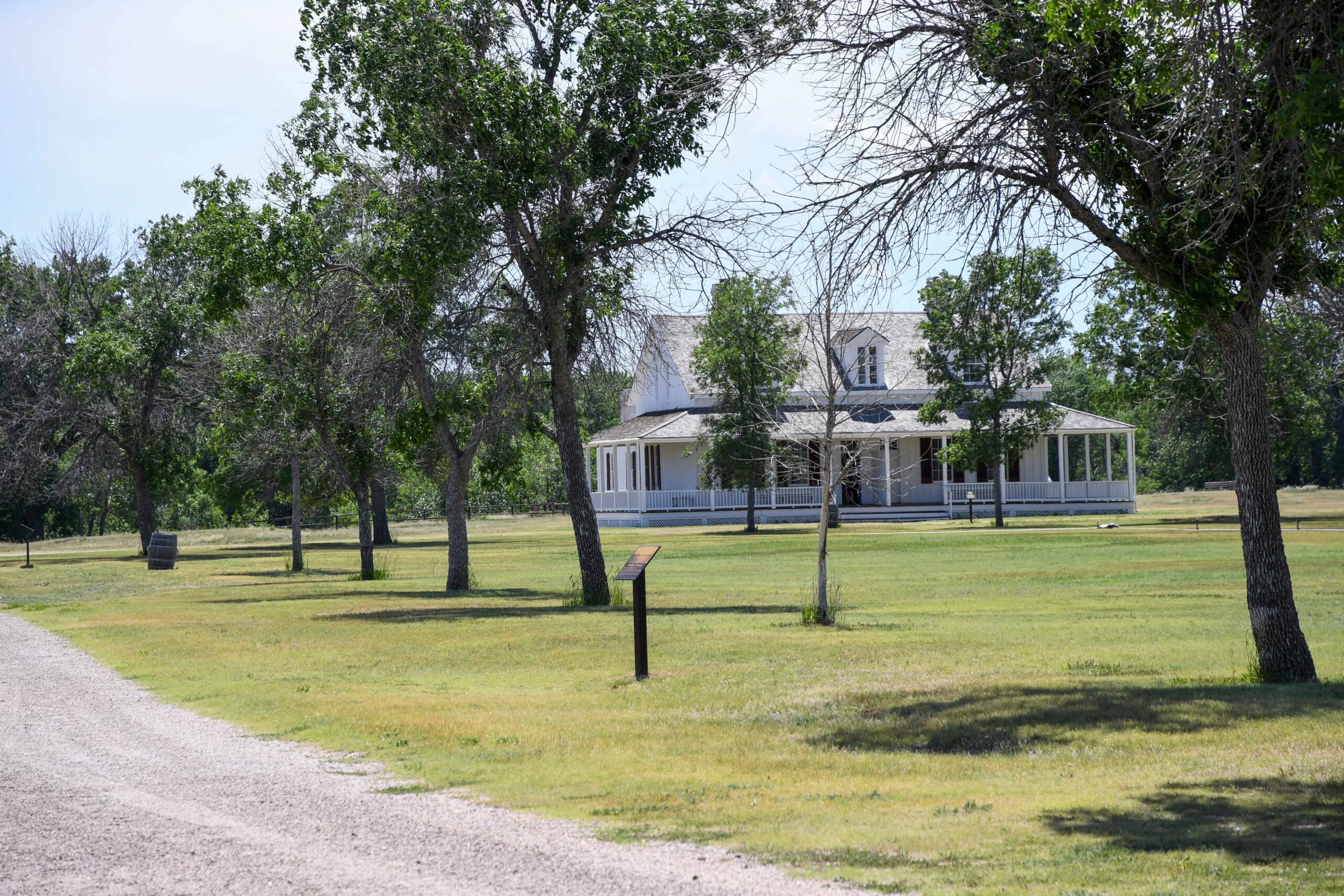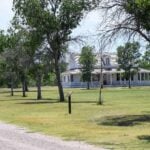Ft. Laramie, WY (by Cindy Sheeley) June 28th, 2024 — June 26, 1849, was the moment that began it all. Without the purchase of Fort John by the United States Government, Fort Laramie National Historical Site would not have the same meaning as it does today. In addition, the area around Fort Laramie would have forever been changed as well.
Fort Laramie was first established as a private fur trading post in 1834 under the name Fort William, in honor of its founder William Sublette. Later, in 1841, the private trading post’s name was changed to Fort John.
“Fort John would be constructed for $10,000 that spring of 1841,” Chief of Interpretation and Visitor Service Casey Osback said.
Fort John was an adobe fort, sized at about 140 by 160 square feet.
“Lieutenant Daniel Woodberry shows up with topical graphical engineers and Woodberry’s role the topical graphical engineers were to come in here and do a reconnaissance of the area for a potential military post,” Osback explained prior to reading a quote from Fort Laramie: Military Bastion of the High Plains by Douglas C. McChristian. “The goal is to construct Fort Kearny, which would be in western Nebraska, Fort Laramie, here at the confluence, and Fort Hall, which is west of here.”
“Woodberry said, ‘The old fort consists in the main of 19 rooms, varying in size from 12 feet square to 12 by 29 feet square, and running around in open space of 80 feet by 72,”’ Osback read. ‘“Two of the 19 rooms belong to a two-story building having two rooms in the second story, making 21 rooms in all. The outside walls are three feet thick at the bottom and diminish by two offsets on the inside to less than two feet at the top.”’
There were blacksmith shops, wheel rights, and warehouses, as well as a horse and mule corral inside Fort John.
“When they built Fort John, the interest was to start expanding this global economic realm,” Osback explained. “Fort Laramie became that hub, almost like a spoke of a wagon wheel, where it was the center of all of this global economic trade. Fort John was the key to that hub.”
By 1845, Fort John was a well-known post for emigrant parties traveling west on the Oregon Trail. It was very common for migrants to stop for supplies, bath and wash garments in the river, and repair their equipment at the fort during the nation’s westward expansion.
According to nps.gov’s Wyoming: Fort Laramie National Historic Site page, “By the late 1840s, young Indian warriors, who resented white encroachment into their lands, began attacking wagon trains as they moved across the Indian frontier. As a result, the US Army bought [Fort John, that was later renamed Fort Laramie,] in 1849 for the protection of emigrants traveling along the Oregon Trail.”
“Up here, right where that white Officer’s Quarters is at, that would be later referred to as Captain Quarters,” Osback said pointing to white building close to the river. “That would be located at the northeast corner of Fort John.”
Shortly after the purchase was final, construction began on several new buildings, including the Sutler’s Store, Sawmill, Barracks, and Old Bedlam.
“By 1850, we start to have our first families show up,” Osback said. “We start to have kids here by early 1850. In 1851, Fort Laramie really started taking shape. That June 26th day, 175 years ago is the real DNA for the military post that it would evolve.”
To celebrate the 175th Anniversary of the purchase of Fort John by the United States Government, the Fort Laramie National Historical Site held a Living History Camp event on Wednesday, June 26. During the event, ranger historians could be seen by Old Bedlam portraying soldiers of Company G, 6th United States Infantry.
In addition, two special programs were held throughout the day to highlight this very special anniversary.
“When you think of Fort John, think of all of that global economic interaction, the cultural crossroads that evolved here,” Osback said. “This was the perfect place that the American Fur Company had established. The legacy of June 26th today, 175 years later, is that this place has withstood the test of time.”
“The legacies of this transaction are still prominent today,” he continued. “Just image if the fur company had not come in here and built Fort John back in 1841, or if we didn’t have the North Platte and Laramie Rivers; none of this would be here.”









